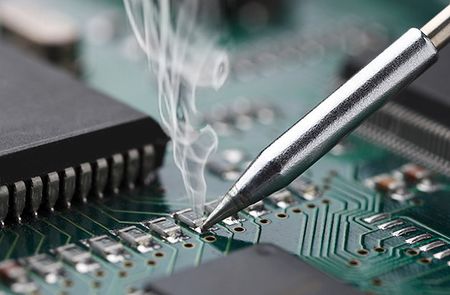Soldering Irons
Soldering, is a process in which two or more items (usually metal) are joined together by melting and putting a filler metal (solder) into the joint, the filler metal having a lower melting point than the adjoining metal. Soldering differs from welding in that soldering does not involve melting the work pieces. In brazing, the filler metal melts at a higher temperature, but the work piece metal does not melt. In the past, nearly all solders contained lead, but environmental and health concerns have increasingly dictated use of lead-free solder for electronics and plumbing purposes.
Thing 1
There is evidence that soldering was employed as early as 5
Applications
Soldering is used in plumbing, electronics, and metalwork from flashing jewelry.
Solders
Soldering filler materials are available in many differe
Processes
There are three forms of soldering, each requiring progressively higher temperatures and producing an increasingly stronger joint strength:
Lead-free electronic soldering
More recently environmental legislation has specifically targeted the wide use of lead in the electronics industry. The RoHS directives in Europe required many new electronic circuit boards to be lead free by 1 July 2006, mostly in the consumer goods industry, but in some others as well. In Japan lead was phased out prior to legislation by manufacturers due to the additional expense in recycling products containing lead.
Electronics
Various problems may arise in the soldering process which lead to joints which are nonfunctional either immediately or after a period of use.
